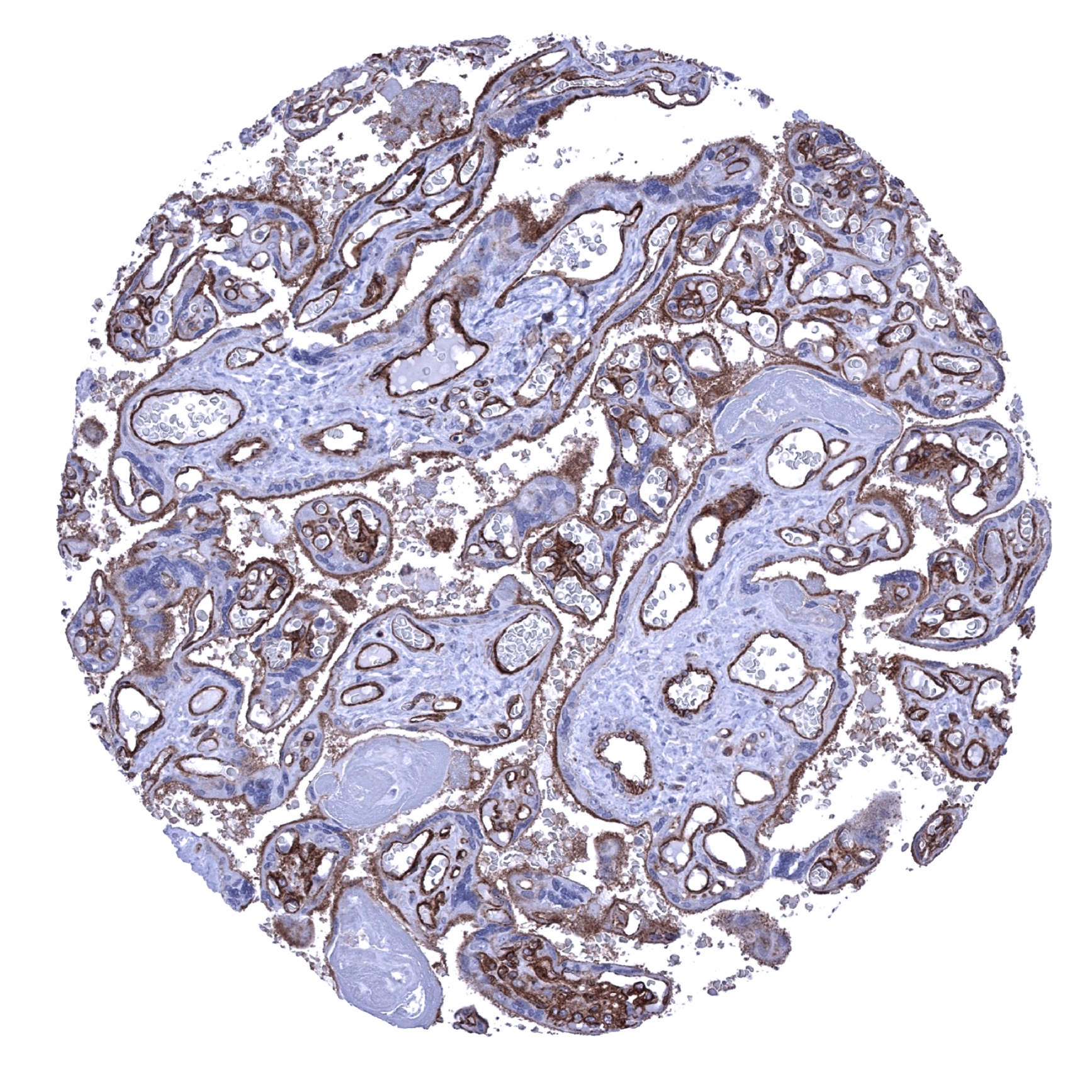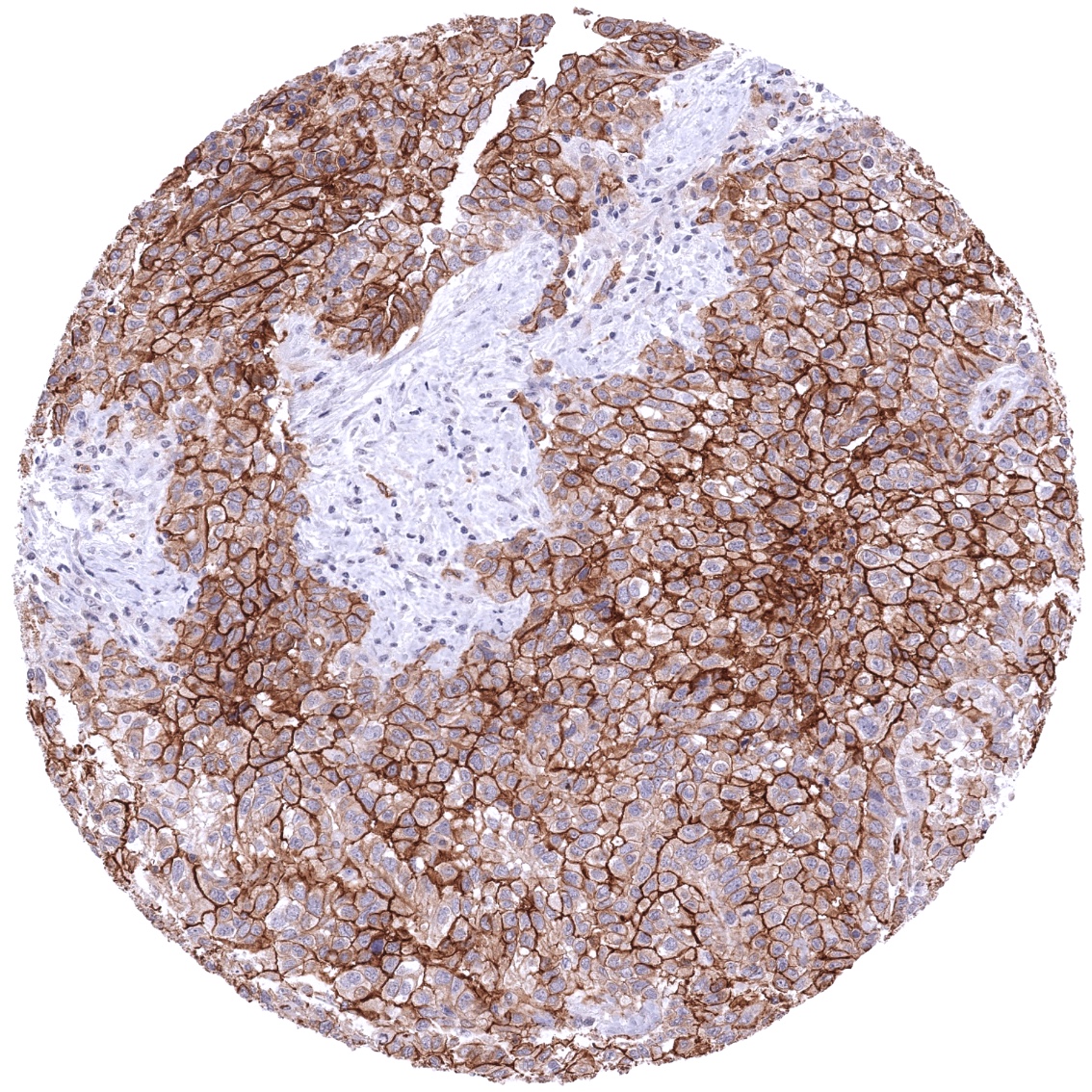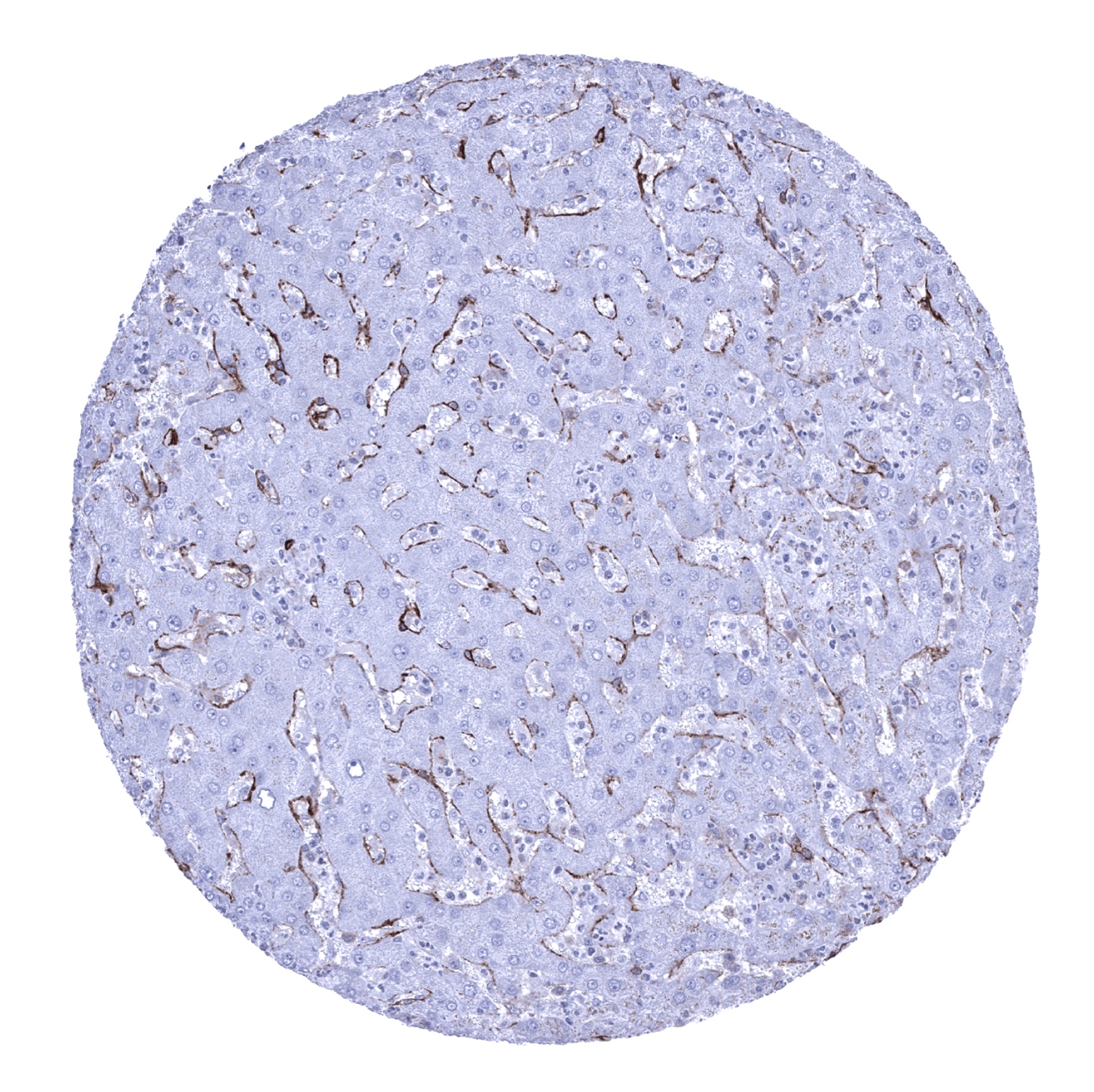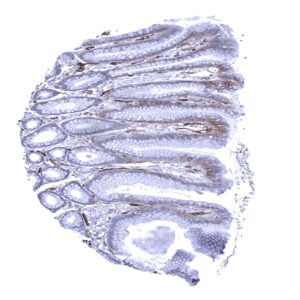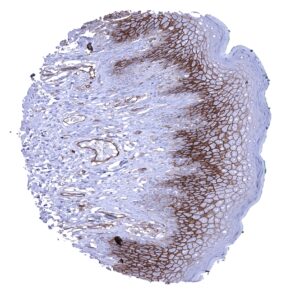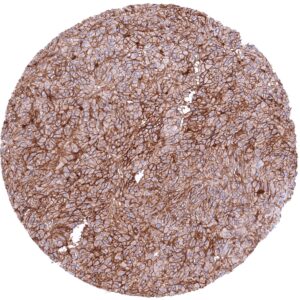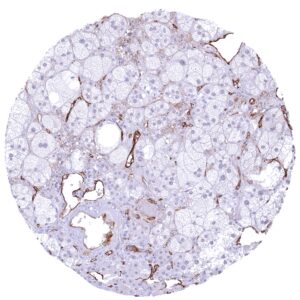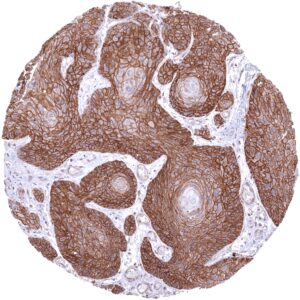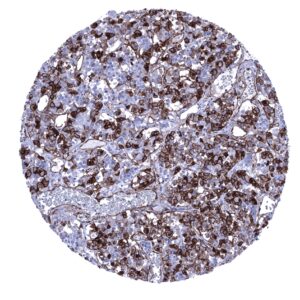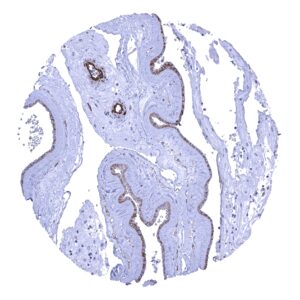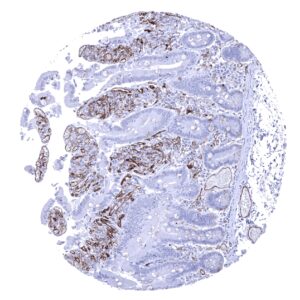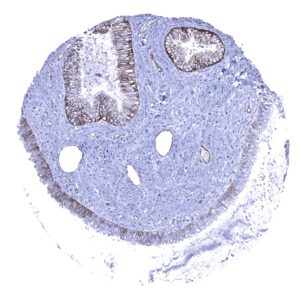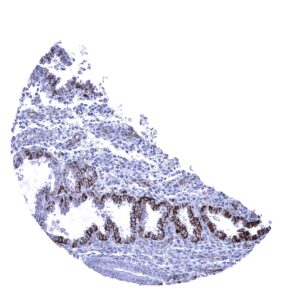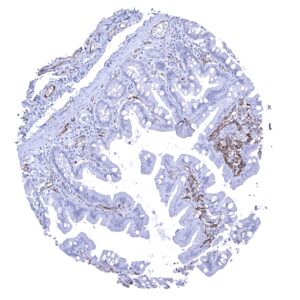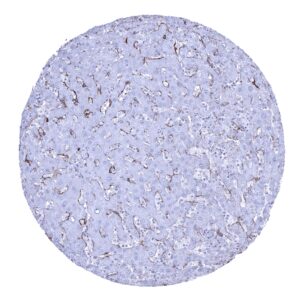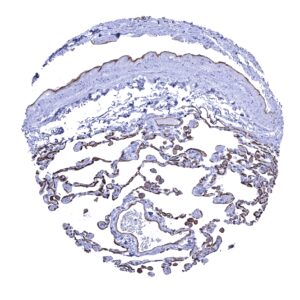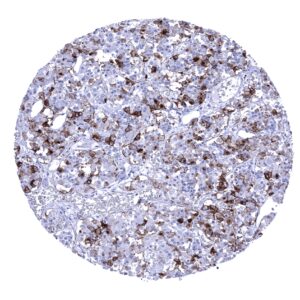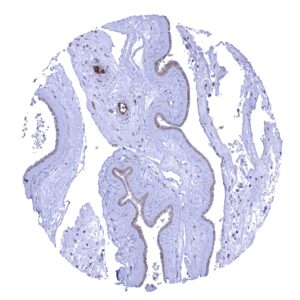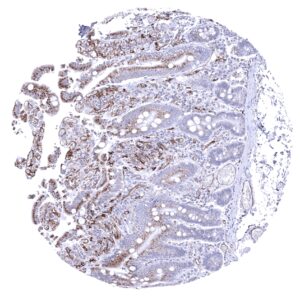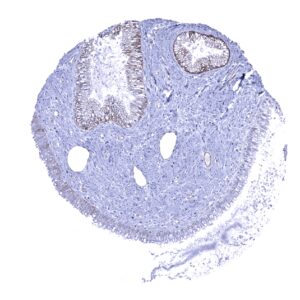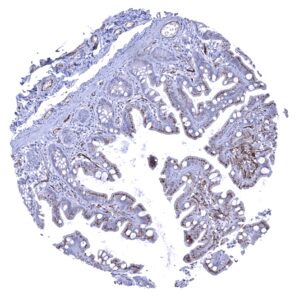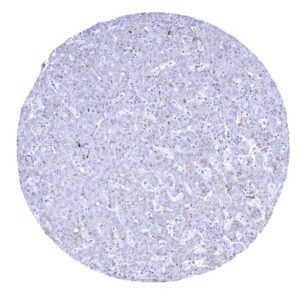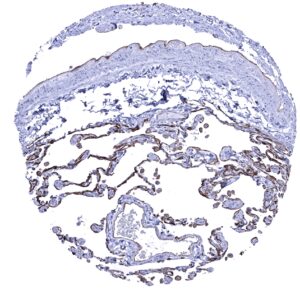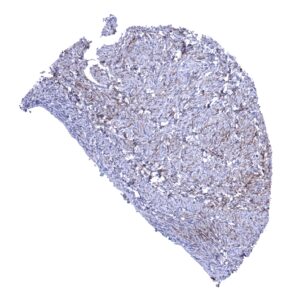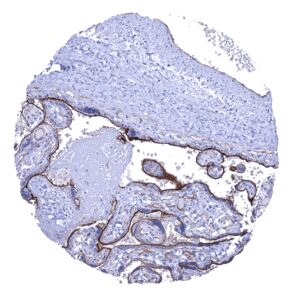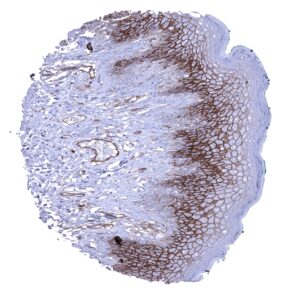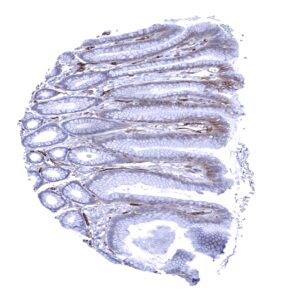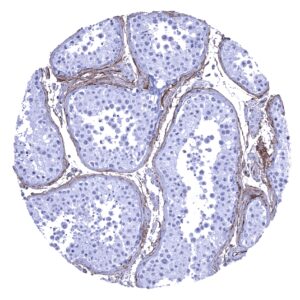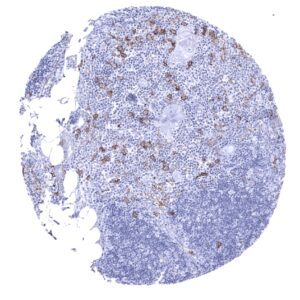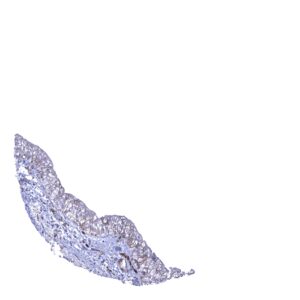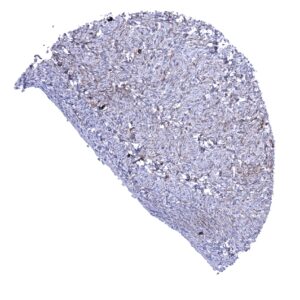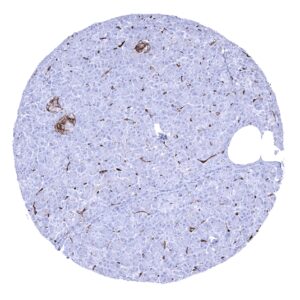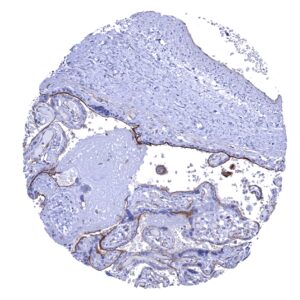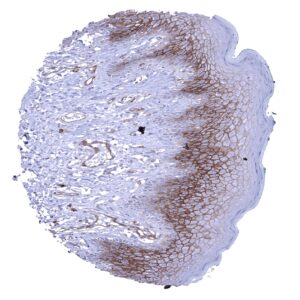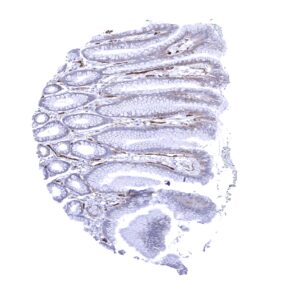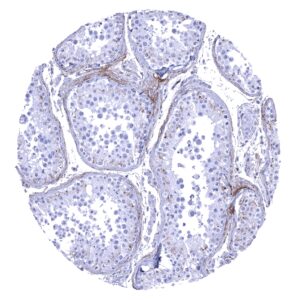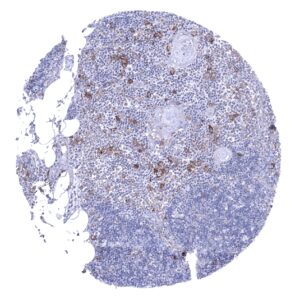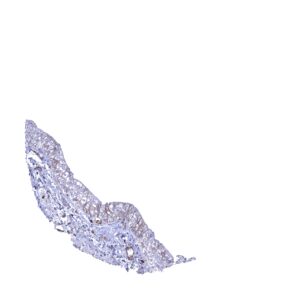295,00 € – 995,00 €
Product details
Synonyms = AHUS6; BDCA3; CD141; Fetomodulin; Thbd; THPH12; THRM; Thrombomodulin (TM)
Antibody type = Recombinant Mouse monoclonal / Mouse IgG1, kappa
Clone = MSVA-141M
Positive control = Lung: A strong staining should be seen in endothelial cells, and at least a weak to moderate membranous CD141 staining should be seen in alveolar macrophages.
Negative control = Colon: Kidney: Epithelial cells should not stain for CD141.
Cellular localization = Cell Surface and Cytoplasmic
Reactivity = Human
Application = Immunohistochemistry
Dilution = 1:100 – 1:200
Intended Use = Research Use Only
Relevance of Antibody
Biology Behind
Thrombomodulin (CD141) is a of 74kDa membrane bound glycoprotein coded by the THBD gene on chromosome 20p11.22. Thrombomodulin is expressed on endothelial cells and acts as a cofactor in the thrombin-induced activation of protein C in the anticoagulant pathway. By forming a complex with thrombin, it increases the speed of protein C activation by a factor of 1000 and thus reduces blood coagulation. Thrombomodulin-bound thrombin also inhibits fibrinolysis by cleaving thrombin-activatable fibrinolysis inhibitor into its active form and impacts the function C3b inactivation by factor I. Thrombomodulin also occurs on a very rare (0.02%) subset of human dendritic cells called MDC2. Mutations in the thrombomodulin gene (THBD) have also been reported to be associated with atypical hemolytic-uremic syndrome (aHUS).
Staining Pattern in Normal Tissues
CD141 expression preferably occurs in blood vessels although the expression levels appear to vary. CD141 staining of endothelial cells is most significant in the placenta, intestine and the liver. In addition, a membranous CD141 staining is seen in basolateral membranes of the surface epithelium of the stomach, about 80% of islet cells of pancreas+++, endocervical epithelium, some endometrial glands, the adenohypophysis (not in all samples), and few basal cells of the prostate. In squamous epithelium, suprabasal cells show a significant staining while basal cells remain negative and the staining intensity decreases towards the top cell layers. In the placenta, a strong CD141 staining is seen on the surface cell layer of the syncytiotrophoblast and a moderate to strong staining occurs in amnion and chorion cells. In lymphoid tissues, CD141 staining is largely limited to small vessels. However, a scattered cell population, preferentially occurring in the thymic medulla shows a strong CD141 positivity. In the lung, most alveolar macrophages show a distinct moderate to strong membranous CD141 staining. In addition a moderate CD141 staining occurs in ovarian stroma cells and along muscular sheaths of testicular tubules.
The findings described above are this consistent with the RNA data described in the Human Protein Atlas (Tissue expression CD141)
Positive control = Lung: A strong staining should be seen in endothelial cells, and at least a weak to moderate membranous CD141 staining should be seen in alveolar macrophages.
Negative control = Colon: Kidney: Epithelial cells should not stain for CD141.
Staining Pattern in Relevant Tumor Types
A membranous CD141 immunostaining can be found in a variable fraction of tumors from several different entities including squamous cell carcinomas, urothelial cancer, ovarian carcinomas, mesotheliomas and others.
The TCGA findings on CD141 RNA expression in different tumor categories have been summarized in the Human Protein Atlas.
Compatibility of Antibodies
No data available at the moment
Protocol Recommendations
IHC users have different preferences on how the stains should look like. Some prefer high staining intensity of the target stain and even accept some background. Others favor absolute specificity and lighter target stains. Factors that invariably lead to more intense staining include higher concentration of the antibody and visualization tools, longer incubation time, higher temperature during incubation, higher temperature and longer duration of the heat induced epitope retrieval (slide pretreatment). The impact of the pH during slide pretreatment has variable effects and depends on the antibody and the target protein.
All images and data shown here and in our image galleries are obtained by the manual protocol described below. Other protocols resulting in equivalent staining are described as well.
Manual protocol
Freshly cut sections should be used (less than 10 days between cutting and staining). Heat-induced antigen retrieval for 5 minutes in an autoclave at 121°C in pH 7,8 Target Retrieval Solution buffer. Apply MSVA-141M at a dilution of 1:150 at 37°C for 60 minutes. Visualization of bound antibody by the EnVision Kit (Dako, Agilent) according to the manufacturer’s directions.
Potential Research Applications
- The clinical/biological significance of CD141 expression in a small subset of dendritic cells needs to be further investigated.
- The biological and clinical significance of CD141 expression in cancer cells needs to be evaluated.
- The diagnostic role of CD141 immunohistochemistry in the classification of tumors need to be evaluated.
Evidence for Antibody Specificity in IHC
There are two ways how the specificity of antibodies can be documented for immunohistochemistry on formalin fixed tissues. These are: 1. Comparison with a second independent method for target expression measurement across a large number of different tissue types (orthogonal strategy), and 2. Comparison with one or several independent antibodies for the same target and showing that all positive staining results are also seen with other antibodies for the same target (independent antibody strategy).
Orthogonal validation: For the antibody MSVA-141M, immunostaining data were compared with data from three independent RNA screening studies, including the Human Protein Atlas (HPA) RNA-seq tissue dataset, the FANTOM5 project, and the Genotype-Tissue Expression (GTEx) project, which are all summarized in the Human Protein Atlas (Tissue expression CD141). In agreement with RNA expression data, CD141 positive cells were particularly common in the lung and the spleen. However, the existence of CD141 positive endothelial cells in virtually all normal tissues is reflected by at least some RNA expression documented in every organ. This limits the potential of orthogonal validation for this antibody target.
Comparison of antibodies: CD141 specific staining of MSVA-141M is corroborated by comparison with a commercially available independent second antibody (termed “validation antibody”). All structures stained by MSVA-141M were also stained by the “validation antibody”. Comparative images of the skin, urothelium, amnion, adenohypophysis, pancreas, testis, endocervix, lung, endometrium, ovary, thymus, stomach, duodenum, ileum, and the liver are shown below as examples.
Independence of the two antibodies (MSVA; validation antibody) is documented by an additional granular cytoplasmic staining in duodenum, ileum, and the liver which was only seen after staining with the validation antibody but not by using MSVA-141M. These granular stainings are considered antibody specific cross-reactivities of the validation antibody.

